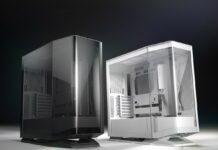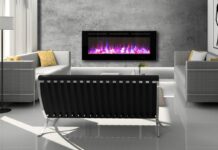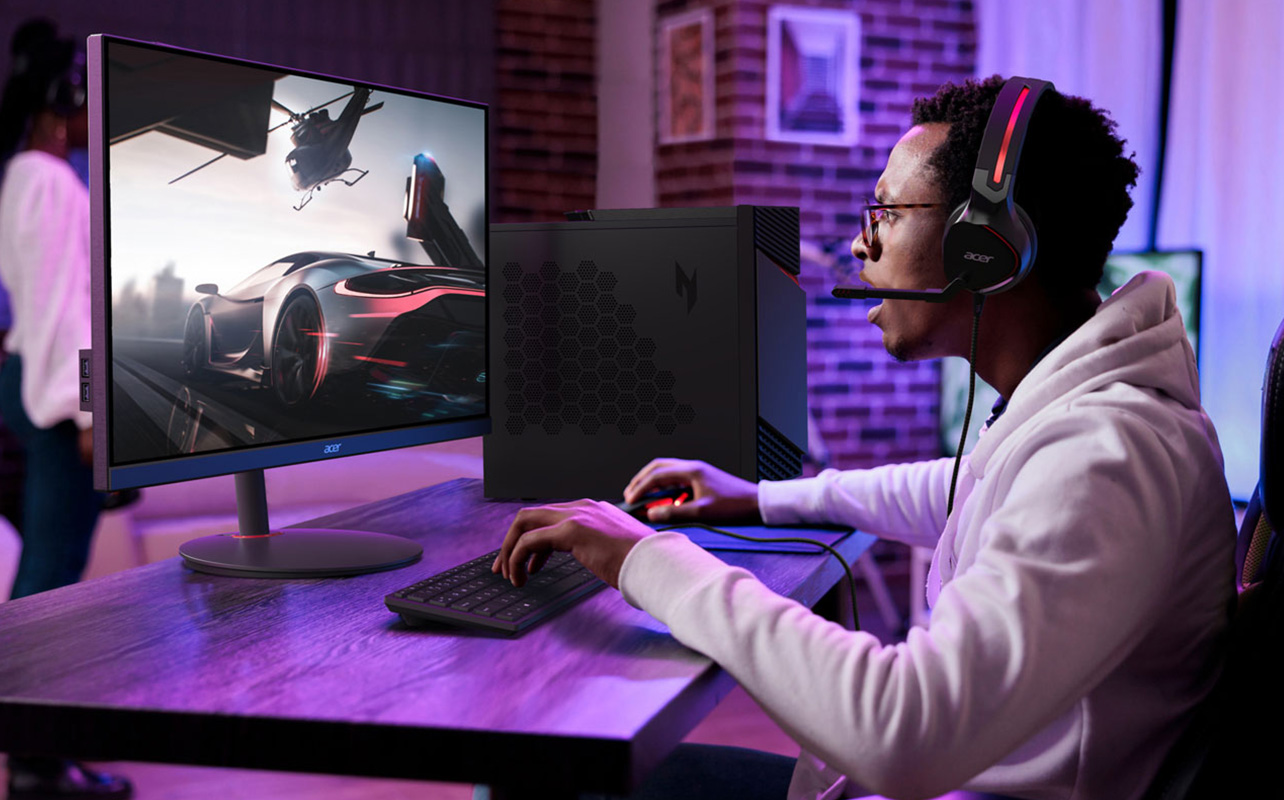
Whether you’re setting up a home office, diving into the latest PC games, or shopping for a powerful machine for school or creative work, a desktop PC offers the performance and flexibility to match your needs. In 2025, desktops come in more shapes and sizes than ever ranging from sleek all-in-one systems to powerful towers and ultra-compact mini-PCs.
This year also brings a new wave of innovation, including Copilot+ PCs that feature built-in AI capabilities, Intel’s 14th Gen processors, AMD Ryzen 8000 series, and lightning-fast PCIe Gen 5 SSDs. These advancements help streamline everything from multitasking to gaming, creative work, and even day-to-day productivity.
In this guide, we’ll break down everything you need to know about desktop PCs—from performance specs to form factors—to help you confidently choose the right setup. Whether you’re a first-time buyer or upgrading an older system, we’ll help you narrow your choices based on how you plan to use your PC.
Table of Contents
- Desktop PC vs laptop
- The basics of a desktop computer
- Windows vs Apple: Operating System options
- Types of desktop PCs
- PC Connectivity
- Essential Accessories for Your Desktop PC
- Should you build your own PC?
Desktop PC vs. laptop: Which one suits you best?
Both desktop PCs and laptops can handle everyday computing tasks, but they differ in how they deliver power, flexibility, and convenience.
If portability is your top priority—like working remotely, attending classes, or gaming on the go, a laptop may be the better fit. Today’s latest models, including Copilot+ laptops powered by AI-enabled processors, offer impressive performance while remaining lightweight and compact.
For those who need maximum power, upgradability, and customization, a desktop PC is often the smarter choice. Desktops are ideal for:
- Serious gaming and virtual reality
- Creative work like video editing, 3D rendering, or graphic design
- Home office or productivity setups with multiple monitors and accessories
Unlike laptops, desktop PCs let you choose and swap out components such as monitors, keyboards, and graphics cards. That means you can personalize everything—from a high-resolution display to ergonomic accessories—and upgrade parts as your needs evolve.
Keep in mind:
- Desktops typically offer more ports for wired connectivity
- They tend to be easier to repair or upgrade down the road
- Gaming desktops often outperform even high-end gaming laptops thanks to larger GPUs and more efficient cooling
If you’re unsure which option best suits your needs, check out our full laptop buying guide to compare directly.
The basics: What makes a desktop PC tick?
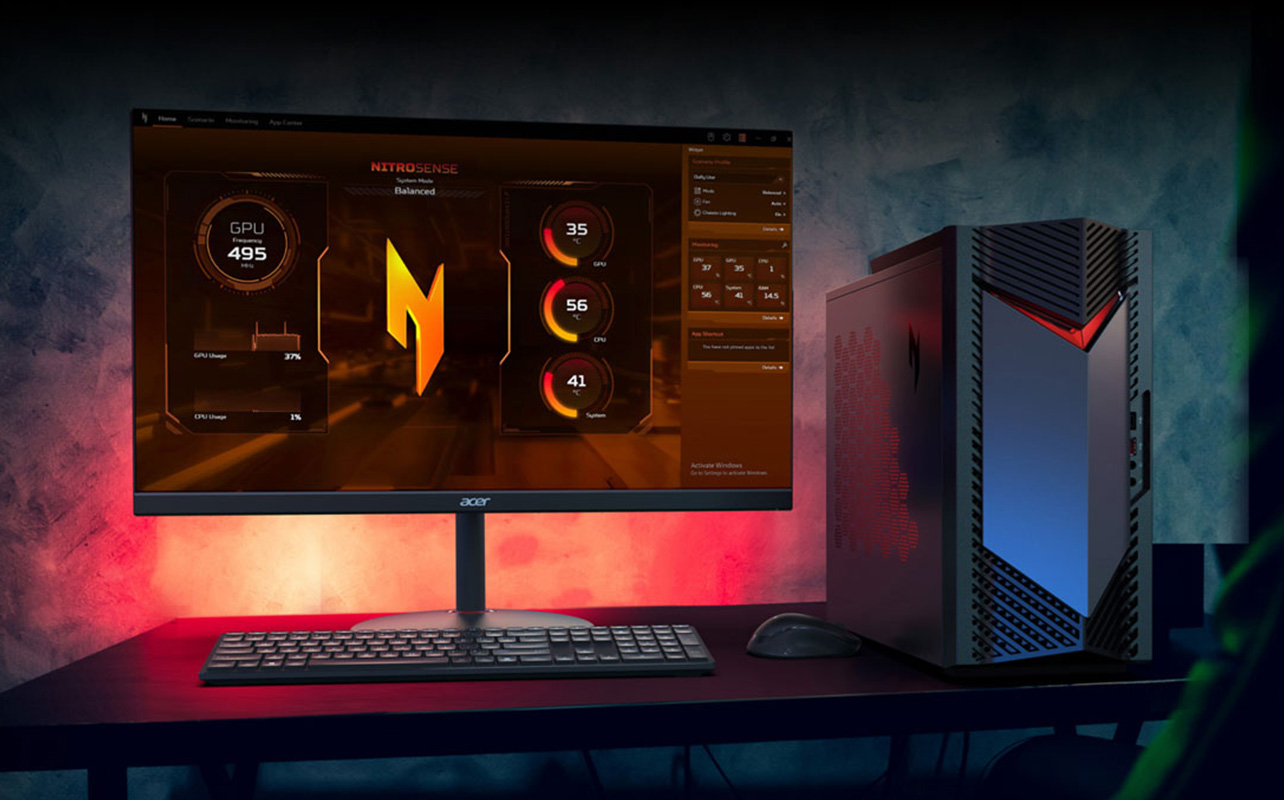
Before choosing the right desktop PC, it helps to understand the key components that drive performance. Whether you’re shopping for work, school, or gaming, these four elements define how powerful and future-ready your computer will be:
Processor (CPU): The brain of your PC
The Central Processing Unit (CPU) controls everything your PC does. You’ll find desktops equipped with the latest Intel 14th Gen Core processors and AMD Ryzen 8000 series. Both options deliver faster speeds, improved power efficiency, and, increasingly, support for AI acceleration via NPUs (Neural Processing Units).
For Mac users, Apple’s new MacBook Air M3 chipset reflects similar advancements in efficiency and machine learning performance—especially relevant if you work across the Apple ecosystem.
- Light use (browsing, office work): Intel Core i5 / AMD Ryzen 5
- Creative workloads (photo, video editing): Intel Core i7 / AMD Ryzen 7
- Gaming or advanced AI workflows: Intel Core i9 / AMD Ryzen 9
Graphics (GPU): Visual performance
The Graphics Processing Unit (GPU) powers everything you see on-screen. It’s especially critical for gaming, 3D rendering, video editing, and AI tools.
- Entry-level: Integrated graphics (sufficient for web browsing, office apps)
- Mid-range to high-performance: Dedicated GPUs like NVIDIA RTX 40 series or AMD Radeon RX 7000 series
- Creative professionals: Look for GPUs with high VRAM and support for multiple monitor outputs
Desktop Memory (RAM): Smooth multitasking
RAM (Random Access Memory) lets your computer handle multiple tasks at once. For modern desktops, 16GB is now the standard minimum. If you’re running demanding software or multitasking heavily, 32GB or more is recommended.
More RAM means faster performance when switching between apps, browsing with dozens of tabs open, or running heavy editing software.
Storage: Where your files live
Unlike RAM, storage keeps your files and programs safe even when your PC is off. Today’s systems use:
- SSD (Solid State Drive): Fast, reliable, ideal for operating systems and software.
- HDD (Hard Disk Drive): High capacity, affordable, slower than SSDs.
- Best balance: A combination of SSD + HDD for speed and capacity.
Learn more in our data storage solutions buying guide.
Quick reference: Best desktop PC specs by use case
Not sure where to start? Here’s a quick breakdown of recommended specs based on what you plan to use your desktop PC for:
| Use Case | Processor (CPU) | Graphics (GPU) | Memory (RAM) | Storage |
|---|---|---|---|---|
| Everyday home & office | Intel Core i5 / AMD Ryzen 5 | Integrated graphics | 16GB | 512GB SSD |
| Creative work (photo/video editing) | Intel Core i7 / AMD Ryzen 7 | NVIDIA RTX 4070 / AMD RX 7700+ | 32GB | 1TB SSD or SSD + HDD combo |
| Gaming & VR | Intel Core i7–i9 / AMD Ryzen 7–9 | NVIDIA RTX 4080+ / AMD RX 7900+ | 32GB–64GB | 1TB+ PCIe Gen 5 SSD |
| AI-powered workloads | Intel 14th Gen Core Ultra / AMD Ryzen 8000 | NPU-enabled GPU (RTX 40 series+) | 32GB–64GB | 1TB+ PCIe Gen 5 SSD |
| Ultra-compact Mini PC | Intel Core i5 / Apple M3 | Integrated or entry-level dedicated GPU | 16GB | 512GB SSD |
Windows vs Apple (macOS): Choosing your desktop operating system
When selecting a desktop PC, one of the key decisions is choosing between Windows and Apple’s macOS—two distinct operating systems with unique strengths and ecosystems.
Windows PCs, including the latest Copilot+ models, offer broad compatibility with a wide range of software and hardware. Microsoft’s integration of Copilot AI enhances productivity by providing intelligent assistance across apps like Word, Excel, and Teams, making multitasking and workflow smoother than ever. Windows systems are highly customizable and favored by gamers, professionals, and businesses for their flexibility and extensive software library.
Apple’s macOS Sonoma powers a refined lineup of desktop computers, known for their seamless hardware-software integration and creative capabilities. The Apple iMac offers an all-in-one design with a stunning Retina display, perfect for users who want a sleek, clutter-free workspace. The Apple Mac Studio targets professionals and creators needing powerhouse performance for video editing, 3D rendering, and more, packing impressive processing and graphics capabilities into a compact form. Meanwhile, the Apple Mac Mini delivers desktop power in a small, affordable package, ideal for those seeking efficiency and flexibility without compromising on performance.
Each macOS device benefits from smooth integration with the Apple ecosystem, including iCloud syncing, Continuity features, and seamless connectivity with iPhones and iPads. This makes them a great fit for users already invested in Apple products or those focused on creative work.
Ultimately, your choice depends on the software you use, your performance needs, and your preferred workflow. Whether it’s the wide-ranging versatility of Windows PCs or the polished, integrated experience of Apple’s desktops—Best Buy offers a variety of options to suit every user.
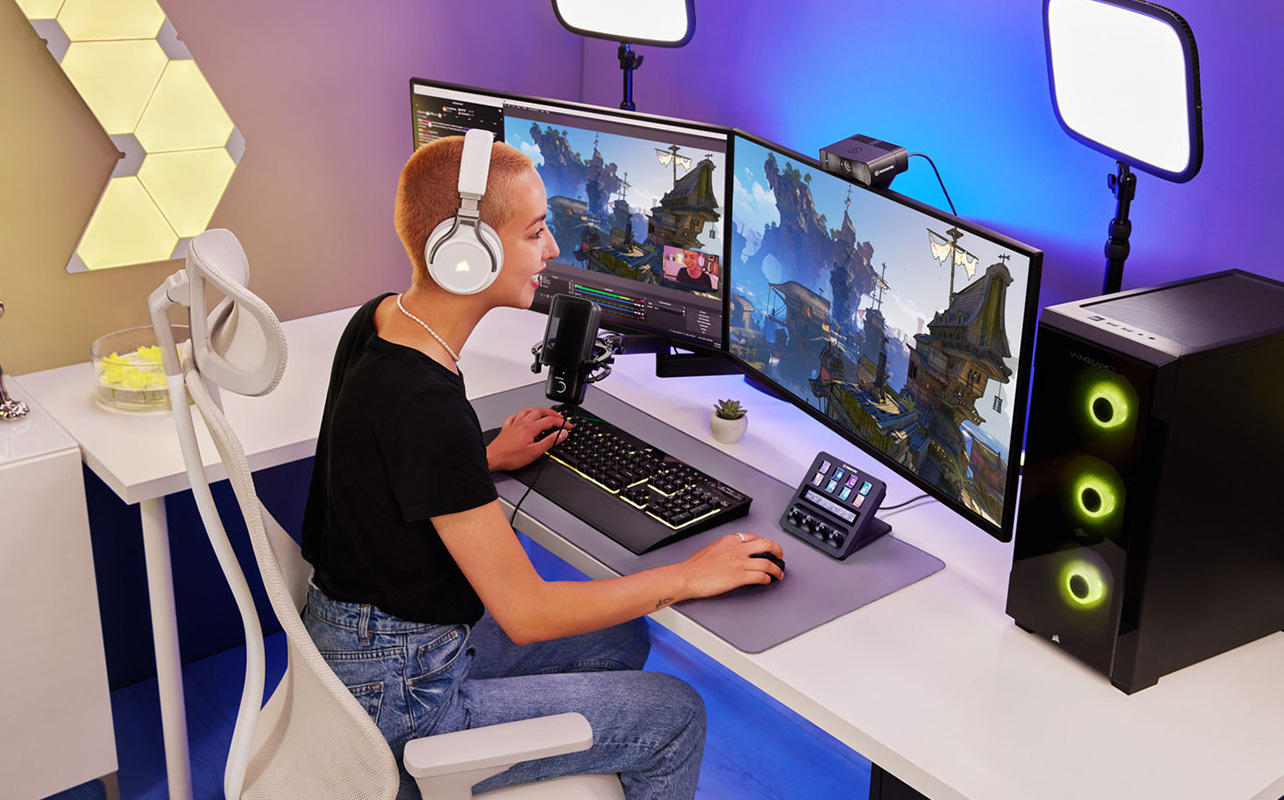
Types of desktop PCs
From ultra-compact designs to high-performance powerhouses, desktop PCs come in several form factors. Each offers a different balance of size, power, and customization potential.
Everyday computing PCs
Everyday computers are designed to handle the tasks most people use their computers for daily. Whether it’s browsing the web, working on documents, streaming videos, or attending virtual meetings, these PCs provide reliable and balanced performance. Typically, they come equipped with mid-range processors like Intel Core i5 or AMD Ryzen 5, combined with 16GB of RAM and fast SSD storage around 512GB to ensure smooth multitasking and quick response times.
Many everyday desktops feature traditional tower designs, offering the flexibility to upgrade parts like RAM or storage down the road. This makes them a practical choice for families, students, or anyone needing a dependable computer that can grow with their needs. Plus, since the monitor, keyboard, and mouse are sold separately, users can personalize their setups according to preferences and workspace requirements.
Gaming desktop PCs
Gaming computers are built for speed and power, making them ideal for gaming, creative work, or any task that demands high performance. They typically include high-end processors such as Intel Core i7 or i9, or AMD Ryzen 7 and 9, paired with dedicated graphics cards from NVIDIA or AMD. These PCs often come with 32GB or more of RAM and fast SSDs to handle intense multitasking, rendering, and high-resolution gaming without breaking a sweat.
What sets gaming desktops apart is their expandability and customizability. Many models feature cases with easy access for upgrades, advanced cooling solutions, and eye-catching RGB lighting for aesthetics. These machines cater to enthusiasts who want not only powerful hardware but also the ability to tweak and enhance their system over time.
All-in-one desktop PCs
All-in-one computers combine the computer and monitor into a single sleek unit, making them excellent space-savers. They’re great for users who want a minimalist setup with fewer cables and less clutter, which is why they’re popular in dorm rooms, home offices, or living rooms. AIOs generally include mid-range processors, 16GB of RAM, and SSD storage around 512GB, all built around a high-resolution display that often supports touchscreen capabilities.
While all-in-ones don’t offer the same upgrade options as traditional towers, they shine in ease of use and design. The streamlined setup gets you up and running quickly, and many models also feature built-in webcams and speakers. This combination of convenience and performance makes them a solid choice for everyday users who value simplicity without sacrificing capability.
Mini desktop PCs
Mini PCs pack surprisingly powerful computing into very compact cases, ideal for those who need a full desktop experience but have limited desk space. These small machines typically come with efficient processors like Intel Core i5 or Apple M-series chips, along with 16GB of RAM and 512GB SSD storage, providing solid performance for tasks such as media streaming, office work, and light creative projects.
Because of their size, mini PCs are often chosen for their quiet operation and sleek, minimalist design. They work well as secondary computers, media servers, or for users who want a discreet yet capable device. Despite their compactness, many mini PCs support multiple displays and offer a good range of ports to connect peripherals, making them surprisingly versatile.
Getting connected: Wired and wireless options for your desktop PC
One of the key advantages of desktop PCs is the variety of ways they connect to other devices and the internet. Whether you prefer wireless freedom or the reliability of wired connections, modern desktops offer plenty of options to keep you connected.
Wireless connectivity on desktops typically includes Wi-Fi and Bluetooth. The latest desktops support Wi-Fi 6 and are quickly adopting Wi-Fi 7, the newest wireless standard that promises faster speeds and better performance even when many devices are connected. Bluetooth 5.3 is now common, allowing you to easily connect wireless keyboards, mice, headphones, and other peripherals with improved range and security.
Wired connections remain essential for many users, especially when speed and stability matter. Desktop PCs often feature multiple USB ports, including the increasingly popular USB-C and Thunderbolt 4 ports, which offer high-speed data transfer and can connect to a wide range of devices like external drives, monitors, and docking stations. Gigabit Ethernet ports provide a fast, reliable wired internet connection—especially important for gamers or those streaming high-quality video. For monitors, HDMI and DisplayPort remain standard for crisp, high-resolution displays, with USB-C monitors also becoming more common.
With so many connectivity options, desktops can easily integrate into your existing setup, whether it’s a home office, gaming station, or media center.
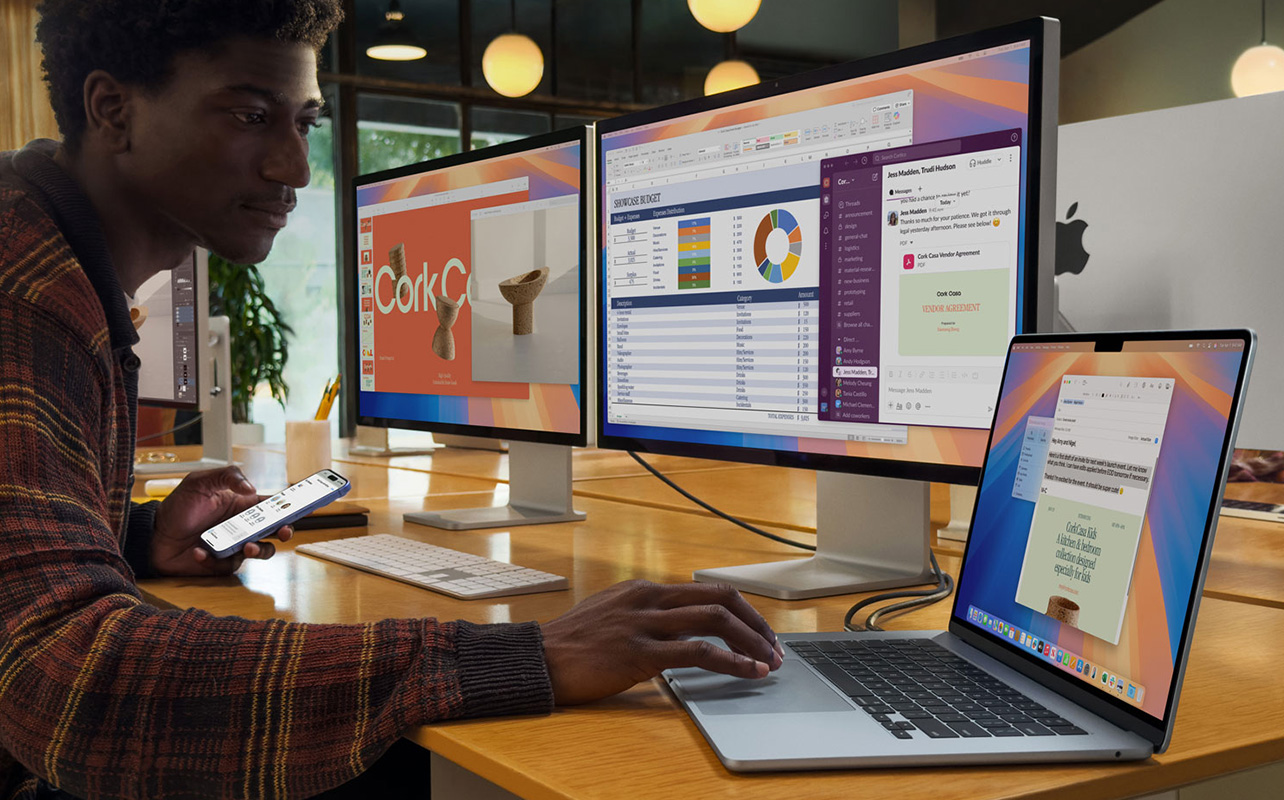
Essential accessories for your desktop PC
A desktop PC setup isn’t complete without the right computing accessories to enhance your experience and productivity. From input devices to sound systems, the peripherals you choose can make a big difference.
Monitors are central to your desktop experience. Unlike laptops, desktops don’t come with built-in screens (except all-in-one models), so picking the right monitor is key. Depending on your needs, you might choose a crisp 4K display for photo editing or a high-refresh-rate screen for gaming. If you’re working from home or studying remotely, an ergonomic adjustable stand and a screen with blue light reduction can help reduce eye strain. Popular options include monitors with USB-C connectivity for a cleaner setup.
To learn more about how to pick the perfect monitor for your desktop PC, be sure to check out our computer monitor buying guide.
Keyboards and mice are your main tools for interacting with your PC. While many desktops come with basic sets, upgrading to ergonomic models like the Logitech MX series can improve comfort, especially for long work or gaming sessions. Wireless Bluetooth options reduce cable clutter, and specialized devices such as mechanical keyboards or precision gaming mice cater to enthusiasts and professionals alike.
Printers, webcams, headsets and microphones are important if you need to print documents or stay connected via video calls and streaming. Wireless all-in-one printers add convenience, while high-quality webcams and microphones ensure clear communication, perfect for remote work or online classes.
Audio accessories can elevate your PC experience. While many desktops have basic built-in speakers or none at all, investing in quality PC speakers, soundbars, or headphones can provide immersive sound for gaming, movies, and music. Consider your space and noise preferences when choosing between speakers and headphones.
Choosing the right accessories tailored to your needs helps you get the most out of your desktop PC, whether it’s for work, gaming, or entertainment.
Should you build your own PC?
Building your own desktop PC can be a rewarding project if you want complete control over every component—from the processor and graphics card to the case and cooling system. This approach lets you tailor a machine to your exact needs, whether that’s a powerhouse gaming rig, a creative workstation, or a budget-friendly everyday computer.
When building your own PC, it’s important to consider compatibility between parts and future upgradeability. Key components to choose carefully include the CPU, GPU, RAM, storage drives, motherboard, power supply, and cooling solutions. Many enthusiasts also look for advanced features like AI acceleration via NPUs or liquid cooling for optimal performance and longevity.
If you’re curious about what parts you’ll need or want to explore the latest PC components, check out our PC Builder Lab collection.
Click here to see all the articles of the PC Builder Lab series.
Whether you decide to build from scratch or prefer a ready-to-go desktop, Best Buy offers a wide selection of desktop PCs and accessories to suit every preference and budget. Explore our desktop PC collection to find the perfect fit for your needs.
This article was drafted using AI technology and then reviewed, fact-checked, and revised by a member of our editorial team.





